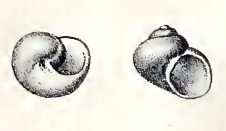| Cirsonella weldii | |
|---|---|
 | |
| Drawing with two views of a shell of Cirsonella weldii | |
| Scientific classification | |
| Kingdom: | Animalia |
| Phylum: | Mollusca |
| Class: | Gastropoda |
| Subclass: | Vetigastropoda |
| Order: | Trochida |
| Superfamily: | Trochoidea |
| Family: | Skeneidae |
| Genus: | Cirsonella |
| Species: | C. weldii |
| Binomial name | |
| Cirsonella weldii (Tenison-Woods, 1877) [1] | |
| Synonyms [2] | |
| |
Cirsonella weldii, with the common name of the shiny liotia, is a species of sea snail, a marine gastropod mollusk in the of family Skeneidae. [2]